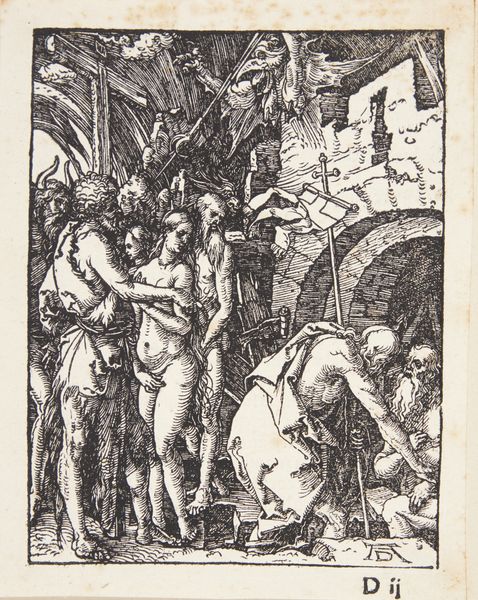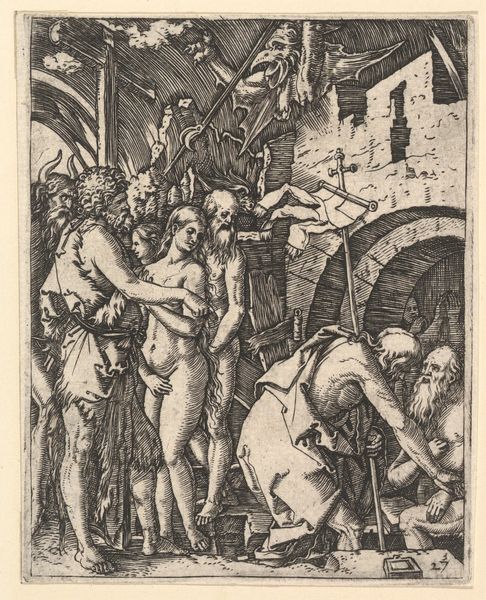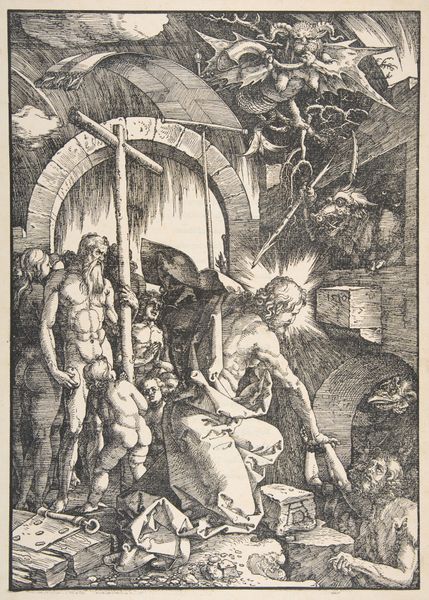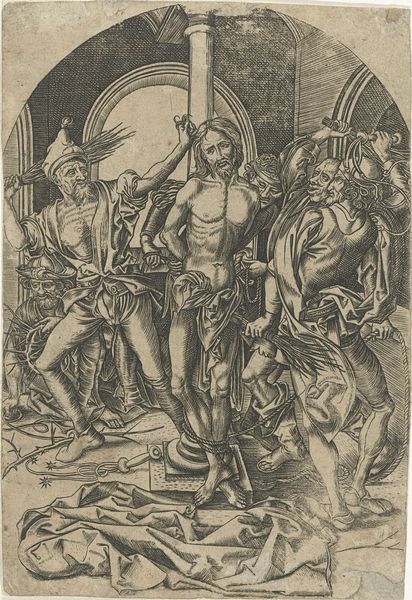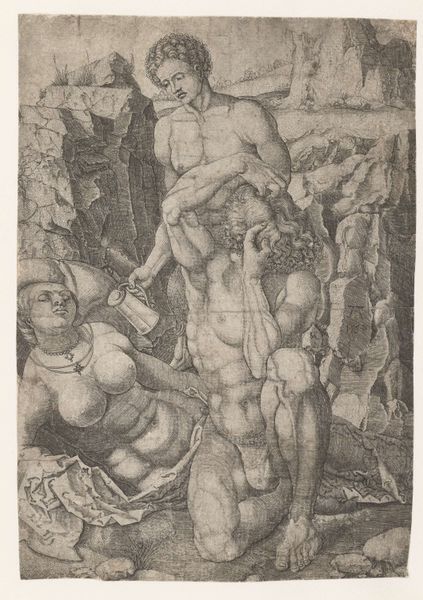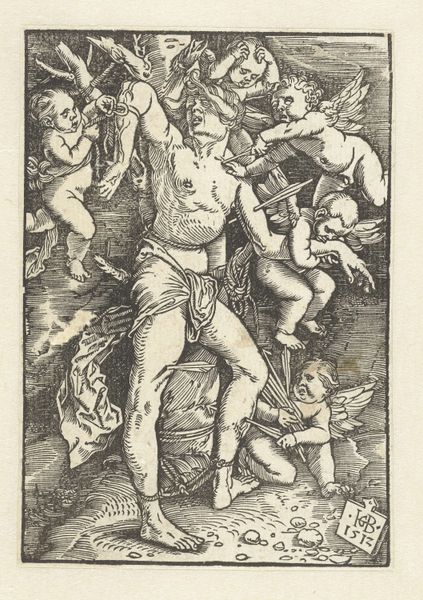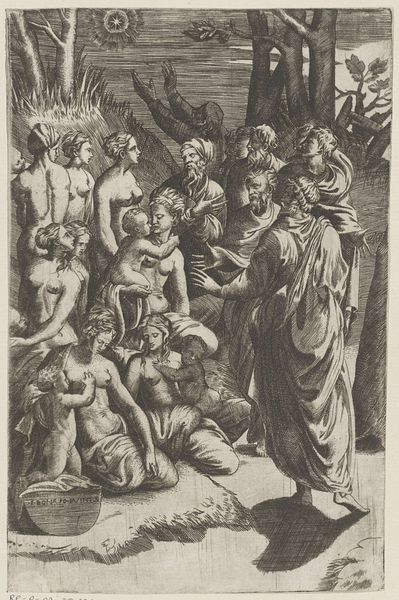
Christ in Limbo, from The Little Passion, (copy) 1485 - 1600
0:00
0:00
drawing, print, woodcut, engraving
#
drawing
#
pen drawing
# print
#
pen illustration
#
pen sketch
#
figuration
#
woodcut
#
history-painting
#
northern-renaissance
#
engraving
#
christ
Copyright: Public Domain
Editor: This is *Christ in Limbo, from The Little Passion*, a print made between 1485 and 1600 after Albrecht Dürer. It looks like an engraving or a woodcut, a complex scene with lots of figures in a dark setting. It’s incredibly detailed and dramatic! What do you see in this piece? Curator: I see a potent allegory of power dynamics, resistance, and the disruption of established hierarchies. "Limbo," in this context, isn't just a waiting room. It's a space inhabited by those marginalized or excluded by dominant religious and social structures. Dürer, through the precise lines of the engraving, seems to ask: who defines salvation, and who is denied it? Editor: So you're saying that the traditional religious narrative is being questioned? Curator: Absolutely. Consider the figure of Christ here. He's actively breaking down gates, liberating souls, defying the monstrous figures lurking in the shadows. This can be read as a radical act of defiance against the powers that maintain this Limbo, the structures that imprison these souls. We might consider how gender, race, or even class informed who was considered worthy of salvation during the Reformation. Editor: I never thought about it that way! The figures being liberated do seem to represent a range of people… Curator: Precisely. Dürer invites us to reflect on who gets to define those categories of "worthy" and "unworthy" in the first place. What if Limbo isn't a geographical place but a metaphor for social and political oppression? Editor: That shifts the whole perspective. Instead of a purely religious scene, it's a powerful statement about social justice! Thanks so much. Curator: And it pushes us to ask, even today, who is still in “Limbo,” and whose actions are freeing them? Food for thought.
Comments
No comments
Be the first to comment and join the conversation on the ultimate creative platform.

